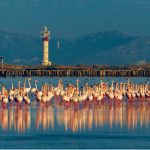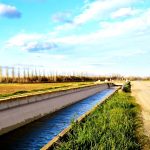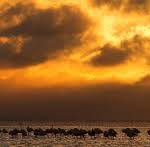DELTEBRE EMOTIONS
The Ebro Delta is the largest wetland area in the Catalan lands. With its 320 km of surface, it constitutes the most important aquatic habitat in the western Mediterranean, after the Camargue (French Regional Park), and the second in Spain, after the Doñana National Park.
On the other hand, its considerable biological role contrasts with the deep humanization of a large part of its surface and with its no less considerable agricultural weight. The harmony between their natural values and exploitation by man has never been easy.
In order to make this harmony possible, and at the request of the inhabitants of the municipality of Deltebre, the Generalitat created, by a decree of 1983, ratified and extended by decree 332/1986, of October 23, 1986, the Delta Natural Park del Ebro, where it is stated that the Ebro Delta is the first wetland area in Catalonia and that its importance internationally is recognized by the highest specialized agencies. Indeed, as early as 1962 it was included in the classification of Euro-African wetlands of international interest developed by the Bureau MAR with category A (urgent priority).
The Natural Park of the Delta del Ebro has a total area of 7,736 ha of which 3,979 correspond to the region of Montsià (right hemidelta) and 3,757 in the region of Bajo Ebro (left hemidelta), It comprises the 011 lagoons, the Old Canal , the Garxal, the Alfacada, the Platjola, the Cerrada and the Encanyissada, the islands of Buda, San Antonio and Sapinya, the peninsulas of the Punta del Cuerno (the Alfaques) and the Fangar, the fangs of Baltasar and the wastelands of Casablanca .
The landscape of the Delta has a strong personality that makes it unique in Catalonia. The completely flat lands already give it a peculiar appearance. In the interior, apart from the fields of vegetable garden and fruit trees, the wide and extensive rice fields, changing according to the seasons (earthy in winter, flooded with water in spring, green in summer) have a special beauty. In the coastal part one of the most attractive lake landscapes of the Mediterranean is presented, large ponds bordered by reeds and juncales. In the peripheral part, large areas of saline soils with halophilic vegetation (fruit salicores, marine reeds) and even the long and deserted sandy beaches, with crowned dunes of baron and other samples of psamophilic vegetation, well adapted to the environment. The natural park modality seems to be the most appropriate, in making a determined preservative action compatible with the maintenance and improvement of the orderly use of the productions of the protected space, and with the promotion of contacts between man and nature through the empowerment of the knowledge of the values and attractions of the area, within an approach that numerous international experiences have proven viable.


















